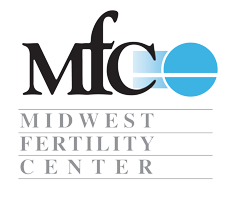Embryo cryopreservation, commonly known as embryo freezing, has emerged as a critical tool in reproductive medicine. This process, which involves freezing and storing embryos for future use, offers individuals and couples a chance to preserve their fertility, whether due to medical reasons, personal circumstances, or family planning preferences.
In this blog, we’ll explore what embryo cryopreservation is, how it works, why it’s used, and what the benefits and considerations are for those considering this option.
What is Embryo Cryopreservation?
Embryo cryopreservation is the process of freezing and storing embryos created through in-vitro fertilization (IVF) for future use. The embryos are preserved at extremely low temperatures, allowing them to be thawed and implanted into a woman’s uterus at a later date.
During an IVF cycle, multiple eggs are retrieved from a woman’s ovaries and fertilized with sperm in a laboratory. The resulting fertilized eggs develop into embryos, which can either be transferred into the woman’s uterus immediately or frozen for future use. Freezing embryos can preserve fertility for months, years, or even decades, depending on the individual’s needs.
The Process of Embryo Cryopreservation
The process of embryo freezing involves several steps:
1. IVF Cycle and Embryo Creation: First, an IVF cycle is conducted. This involves stimulating the ovaries with fertility medications to produce multiple eggs. The eggs are then retrieved and fertilized with sperm in a lab. Once the eggs are fertilized, they begin to develop into embryos.
2. Embryo Assessment: After fertilization, embryos are monitored for several days (typically 3-5 days) to assess their development. The best-quality embryos, usually at the blastocyst stage, are selected for freezing.
3. Freezing the Embryos: The embryos are frozen using a process called vitrification, a rapid freezing method that prevents ice crystals from forming, which could damage the cells. Vitrification increases the survival rate of embryos when they are thawed for future use.
4. Storage: Once frozen, the embryos are stored in liquid nitrogen at temperatures around -196°C (-321°F). In this state, they can remain viable for many years without deterioration.
5. Thawing and Transfer: When the individual or couple is ready to use the embryos, they are thawed and transferred into the woman’s uterus in a process similar to a standard IVF cycle, but without the need for egg retrieval.
Why is Embryo Cryopreservation Used?
Embryo cryopreservation is used for a variety of reasons, often depending on the individual’s medical or personal circumstances. Here are some of the most common reasons people opt for this fertility preservation technique:
1. Fertility Preservation for Medical Reasons
– Cancer treatment: Certain cancer treatments, such as chemotherapy and radiation, can damage the ovaries and reduce fertility. Embryo cryopreservation allows individuals to preserve embryos before undergoing cancer treatments, giving them the option to have biological children in the future.
– Other medical conditions: Women with conditions that may affect fertility, such as endometriosis or autoimmune disorders, may choose to freeze embryos before their reproductive health declines.
2. Family Planning and Delayed Parenthood
Many individuals and couples choose to freeze embryos as a way of delaying parenthood. This might be due to personal circumstances such as career goals, financial stability, or waiting for the right time to start a family. By freezing embryos at a younger age, when fertility is at its peak, individuals can preserve the option to have children later in life, even if their natural fertility declines.
3. IVF Cycle Efficiency
– Excess embryos from IVF: In some IVF cycles, multiple embryos are created, and not all of them may be used in the initial transfer. Instead of discarding the extra embryos, they can be frozen for future use. This allows individuals to attempt multiple pregnancies from a single egg retrieval cycle without needing to undergo another round of ovarian stimulation and egg retrieval.
– Elective embryo freezing: In some cases, individuals or couples may choose to freeze all embryos from an IVF cycle for later use, rather than transferring them immediately. This approach is sometimes used if there are medical reasons to delay pregnancy, such as the risk of ovarian hyperstimulation syndrome (OHSS) or waiting for additional genetic testing results.
4. Genetic Testing and Screening
– Preimplantation genetic testing (PGT): Embryo cryopreservation is often used in conjunction with PGT, which allows for the genetic screening of embryos before transfer. This testing can identify chromosomal abnormalities or inherited genetic conditions, improving the chances of a successful pregnancy and reducing the risk of miscarriage. After testing, the screened embryos can be frozen for use in a later transfer.
5. Surrogacy and Egg/Sperm Donors
For individuals using a surrogate or donor eggs/sperm, embryo freezing can provide flexibility. Embryos can be created and frozen until the surrogate is ready to undergo the embryo transfer. Similarly, donor eggs or sperm can be fertilized and frozen as embryos for future use.
Benefits of Embryo Cryopreservation
1. Fertility Preservation: One of the most significant benefits is the ability to preserve fertility, especially for individuals facing medical treatments or other circumstances that could impair their reproductive capabilities.
2. Higher Pregnancy Success Rates: Studies have shown that frozen embryos can result in high pregnancy success rates, sometimes even higher than fresh embryos. This is likely due to the improved freezing techniques (vitrification) and the ability to transfer embryos in a more controlled environment during a future cycle.
3. Multiple Pregnancy Attempts: By freezing embryos, individuals can attempt multiple pregnancies from a single IVF cycle, reducing the need for repeat ovarian stimulation and egg retrievals, which can be physically and financially taxing.
4. Flexibility in Timing: Embryo cryopreservation allows for flexibility in family planning. Couples or individuals can freeze embryos and choose when they want to proceed with pregnancy, whether that’s in months or even years later.
5. Genetic Testing Opportunities
Embryo freezing provides an opportunity for preimplantation genetic testing (PGT) to identify any chromosomal abnormalities or inherited conditions before transfer. This increases the likelihood of a healthy pregnancy and can reduce the risk of miscarriage or genetic disorders in the child.
Considerations and Risks
While embryo cryopreservation has many benefits, there are also some considerations and potential risks to be aware of:
1. Not All Embryos Survive the Thawing Process: Despite advances in freezing techniques, not every embryo survives the thawing process. However, modern vitrification methods have significantly improved survival rates compared to older, slow-freezing techniques.
2. Emotional and Ethical Decisions: Freezing embryos may raise emotional and ethical considerations, especially if more embryos are created than are needed. Decisions about what to do with unused embryos, such as donating them to other couples, using them for research, or discarding them, can be challenging for some people.
3. Cost: Embryo freezing and storage come with costs, including fees for the IVF procedure, freezing, and long-term storage. While these costs vary, it’s important to consider them when planning for future fertility.
4. Success Rates: Although frozen embryos can lead to successful pregnancies, success is not guaranteed. The likelihood of success depends on factors like the age of the woman when the embryos were created, the quality of the embryos, and any underlying fertility issues.
Embryo cryopreservation is a powerful tool in reproductive medicine that allows individuals and couples to preserve their fertility and plan for the future. Whether due to medical treatments, lifestyle choices, or family planning preferences, freezing embryos offers flexibility and peace of mind.
With advances in technology, frozen embryos can lead to high success rates, giving people the option to build their families on their own timeline. If you’re considering embryo freezing, consulting with a fertility specialist https://mfcfamily.com/ can help you understand the process, benefits, and any potential challenges, ensuring you make the best decision for your reproductive future.

